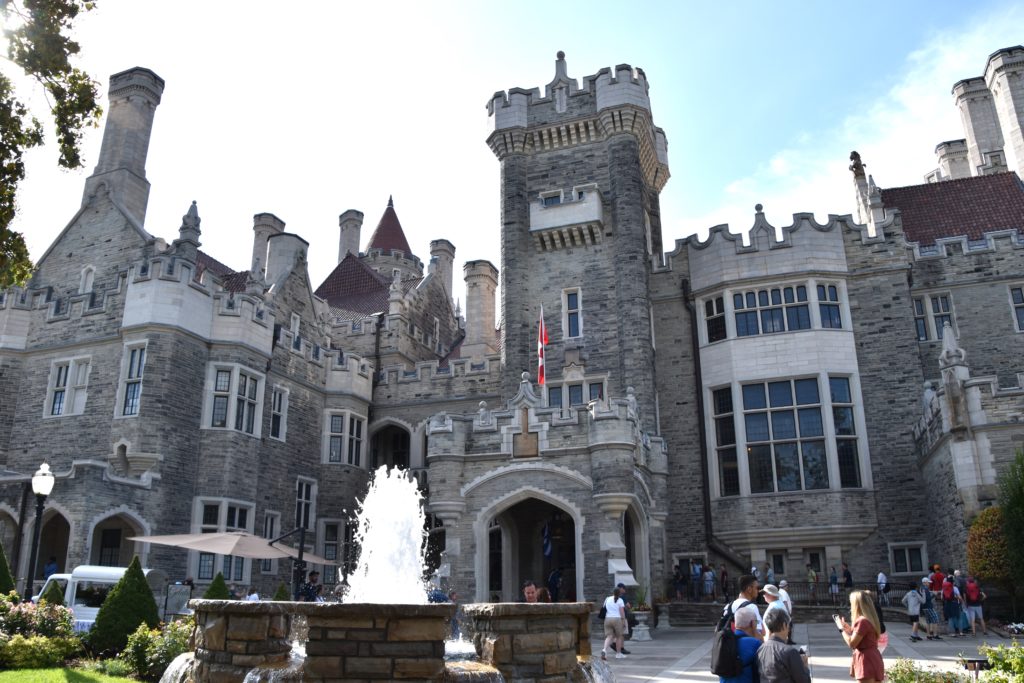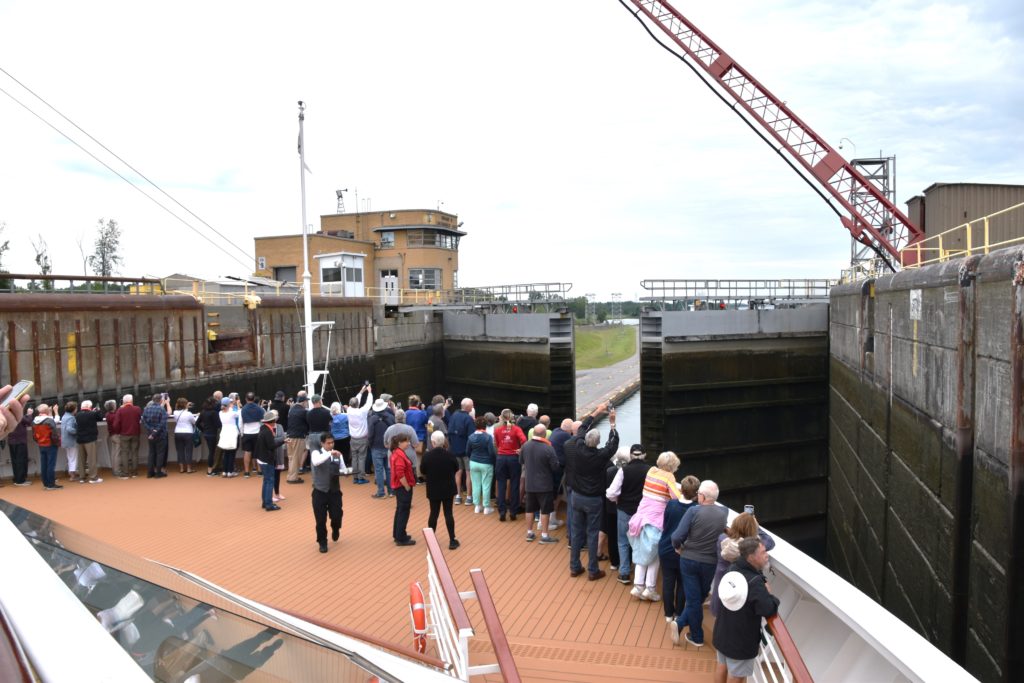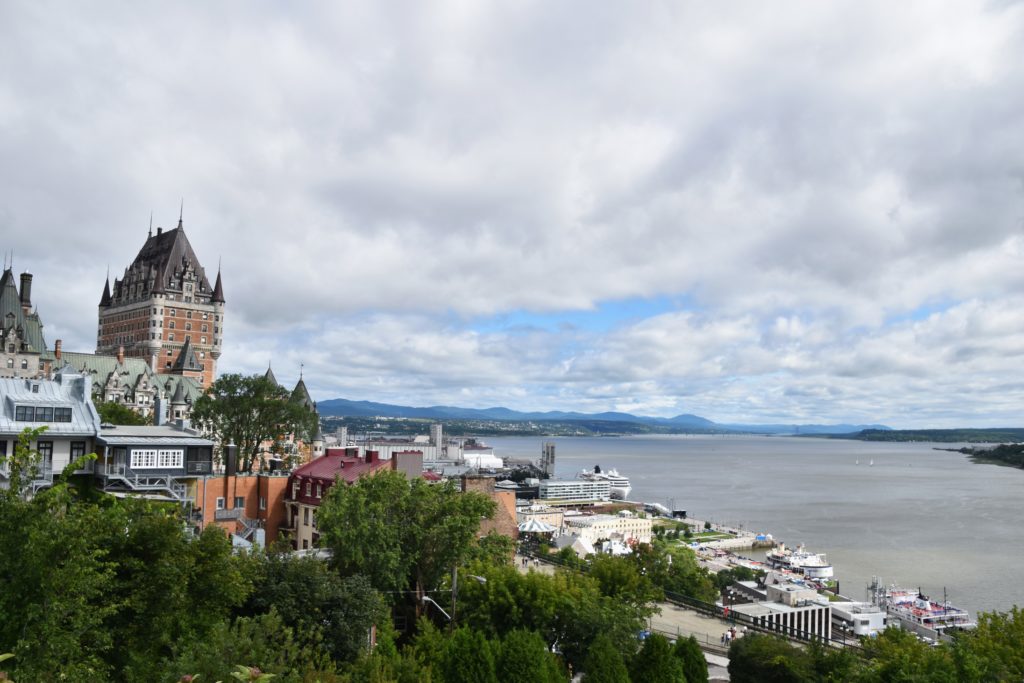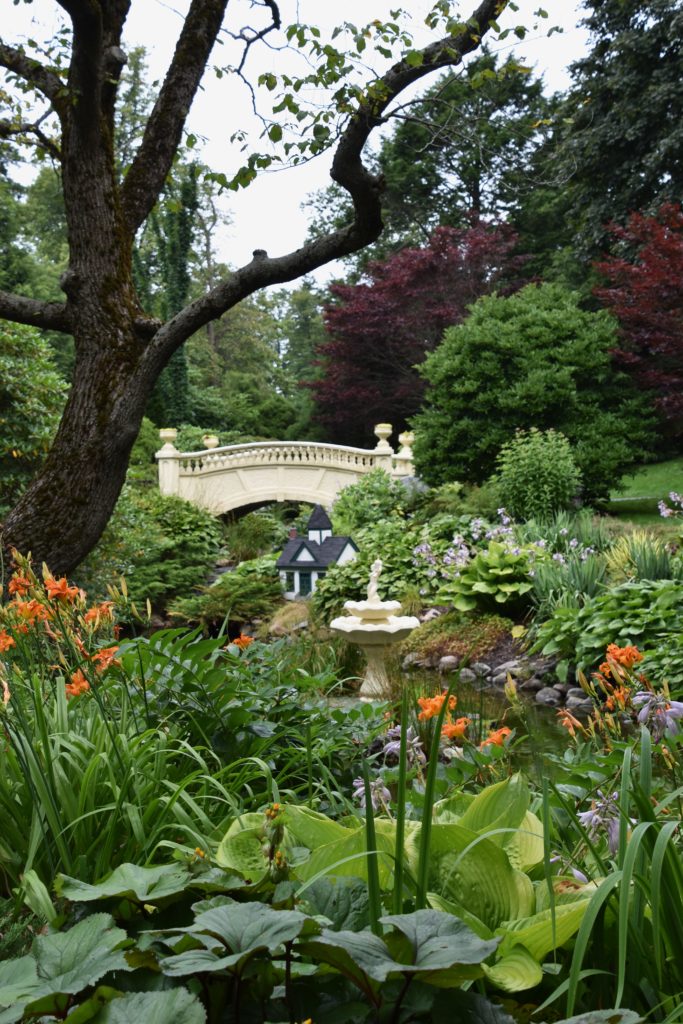At 7 a.m. sharp, the doorbell rang. A smartly dressed young man carrying a breakfast tray arrived with breakfast. Eggs, bacon, hashbrowns, croissants, and oatmeal aroma filled the stateroom.
I am sailing on a Viking Expedition Cruise through Canada. The Polaris is one of two new ships, a smaller version of the cruise line’s ocean-going fleet.
What is different between the ocean and expedition ships is its focus on allowing passengers a better view of natural surroundings and wildlife as they sail along the St. Lawrence Seaway and the Atlantic Ocean exploring Quebec, Prince Edward Island, and Nova Scotia. Guests are as close as possible to some of the most magnificent scenery on earth.
A science centre with a whiteboard daily lists birds and animals the naturalists, scientists, and passengers see on the cruise: otters, raccoons, bald eagles, osprey, gulls, herons, and egrets. The list changes daily as staff and guests head out on kayaks, Zodiacs, special operations boat tours, hiking, and biking excursions. Also, there is a weather centre and animal and bird displays.
The Canadian Discovery itinerary stops at several small ports as it makes its way north from Toronto. Beauty, peace, excitement, historic and exciting ports — every day provides a new experience.
 Casa Loma is a Gothic Revival castle-style mansion and garden in midtown Toronto built in the early 1900 (picture by Marilyn Jones)
Casa Loma is a Gothic Revival castle-style mansion and garden in midtown Toronto built in the early 1900 (picture by Marilyn Jones)This day, after my room service breakfast, Anne (roommate/friend) and I head for shore to board a bus and explore Cap-aux-Meules, Ontario, one of the Magdalen Islands — a small archipelago on the tip of Cap Hérissé in the Gulf of St. Lawrence.
Our first stop is Phare du Borgot, the island's lighthouse. Tall and white, capped in bright red, it takes a backseat to the view it affords with rust-red cliffs kissing gleaming sapphire water.
We continue our journey to Église Saint-Pierre-de-la-Vernière, the second-largest wooden church in North America after Sainte-Marie in Nova Scotia.
We also stop at Havre De Peche De L'etang-du-Nord, a small fishing village with a few gift shops, a statue honoring fisherman, and a glorious view of fishing boats framing the gulf.

Polaris — the ship
The ship's size allows it to sail the locks of the St. Lawrence River and dock in smaller ports in Canada, America's Great Lakes, America’s Eastern Seaboard, the Arctic, Antarctica and South America.
The Polar Class Viking Octantis and Viking Polaris host 378 guests in 189 staterooms, and the vessels purpose-built for expeditions.
Also unique to the expedition ships is the staff of scientists and naturalists. They offer daily educational lectures to help passengers understand the environment and surrounding area.
Always on deck, they assist guests on the lookout for birds and animals.
Even though I chose to take the less adventurous excursions, opting for history, culture, and sightseeing, I was on deck when an announcement declared a sighting of pilot whales. We learn that the mammals with round bulging forehead, a short beaklike snout, and slender pointed flippers characterise the small grey whales of the dolphin family.
Viking Expedition Cruises also offers submarine expeditions.
 RIVERSIDE DES RES Château Frontenac, perched castle-like above the St. Lawrence River in Quebec City (picture by Marilyn Jones)
RIVERSIDE DES RES Château Frontenac, perched castle-like above the St. Lawrence River in Quebec City (picture by Marilyn Jones)Exploring Canadian Ports
Casa Loma, a Gothic Revival castle-style mansion and garden in midtown Toronto, is where I spent my time in the largest city in Canada.
The "castle" was home to financier Sir Henry Pellatt and his wife, Lady Mary Pellatt. Constructed between 1911 and 1914, it is a treasure trove of everything modern in the early 20th century, including an elevator and bowling lanes in the basement.
During the depression after World War I, the City of Toronto raised property taxes from $600 per year to $1,000 monthly. Pellatt would enjoy life in the mansion for less than ten years, leaving in 1923. The city seized Casa Loma in 1924 for unpaid taxes, leaving the building vacant for years.
Today, visitors can roam the 98 rooms and follow a tunnel under the street to the 4,380 square foot stables, potting shed, and Hunting Lodge.
From gleaming wood detail, impressive stained glass, and period furnishings, its beauty is spellbinding. In the basement is a theatre fashioned from the area once designated as the pool. Here a short film chronicles the life of Sir and Lady Pellatt and the castle construction.
Along the St. Lawrence Seaway, Quebec City heaves into view.
 A view of Charlottetown on Prince Edward Island from Polaris (picture Marliyn Jones)
A view of Charlottetown on Prince Edward Island from Polaris (picture Marliyn Jones)I took a photography tour. The Old Town offers breathtaking views — the Château Frontenac, perched castle-like above the St. Lawrence River, was our first subject. Later, we wandered through the narrow streets, making discoveries like the oldest standing Catholic church, Notre-Dame-des-Victoires. We took a funicular up to Dufferin Terrace, 200 feet above the waterway, where explorer Samuel de Champlain built his fort in 1620.
The ship also docks at the edge of Charlottestown on Prince Edward Island.
 Halifax Public Gardens (picture Marliyn Jones)
Halifax Public Gardens (picture Marliyn Jones)Halifax, Nova Scotia
Although I always enjoy Viking excursions, we decided to set off on our own to explore Halifax.
After a few miles of uphill traversing, we entered Halifax Citadel National Historic Site. The 19th-century fort offers a sweeping view of downtown Halifax, and this day, costumed interpreters brought the Citadel to life with two historic regiments of the British Army - the pageantry of the 78th Highlanders and the precision of the Royal Artillery.
We first walked around the main level, entering rooms with illustrative furnishings, including the guard shack, tailor shop, and officer quarters.
The skirl of the bagpipes followed us throughout our visit as we climbed to the second story and lookout, where cannons were on display surrounded by wildflowers. From here is a great vantage point of the city.
Halifax Public Gardens was our next stop and the most visited site in Halifax; it serves as an oasis in the bustling city.
The beautiful 16 acres of Victorian-inspired garden has been open to the public since 1867. We wandered past a pond with resident ducks, flower beds of rainbow colors, and a lovely gazebo in its center.
Our last stop was at the Old Burying Grounds. Established in 1749, this is Halifax's first cemetery.
A young man serving as a guide explained that many residents were buried without markers when the area was designated a burying ground.
Anne and I walked through the solemn grounds with our guide, who pointed out centuries-old symbolism on the markers and one tombstone that named the man who murdered the person buried in the plot.
Other Ontario ports included Trois-Rivières with its grand Notre-Dame-du-Cap Sanctuary and Musee Pop; Saguenay and the museum chronicling the 1996 flood and a delightful tiny village; and Sept-Îles' and the Old Fur Trading Post established in 1661.

